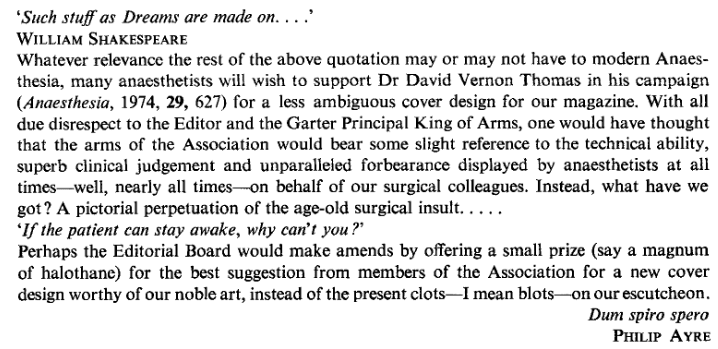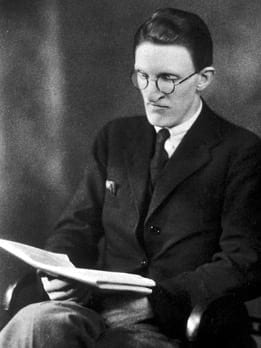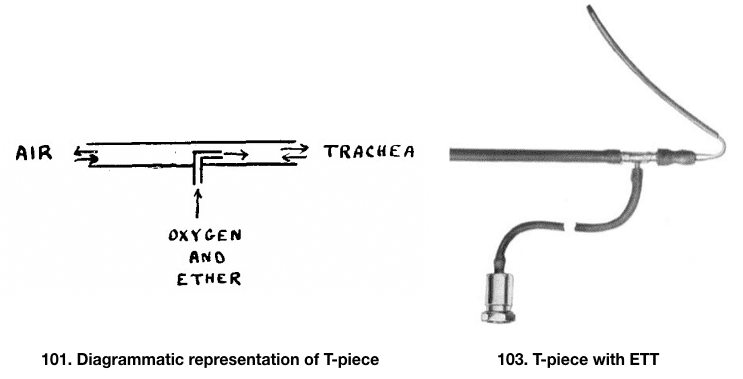T. Philip Ayre
Thomas Philip Ayre (1901-1979) was a pioneer English anaesthetist.
Born the son of a doctor, Ayre’s younger days were one filled with tragedy, having been born with a cleft lip and palate, losing his father at the age of 16 to tuberculosis and developing alopecia at a very early age. Ayre’s later life would not be spared from tragedy either; his wife would die shortly after undergoing a balloon mitral valvotomy, his son would drown at the age of seven years, and his daughter would suffer from cerebral palsy.
Despite this, Ayre’s courage and innate good humour, which many of his colleagues and students remembered him for, enabled him to overcome much of this adversity and become one of the best anaesthetists of the time. Ayre’s skills were most renown for in the field of dental anaesthetics, with none of those he taught being able to match the skill of his techniques that were developed in the early days of anaesthesia before more modern drugs were available.
Ayre is most well-known for his eponymous T-piece, a device which revolutionised anaesthesia for babies and children.
Biography
- Born on March 16, 1901 to a doctor.
- 1933 – MRCS, LRCP from University of Durham.
- 1934 – Anaesthetist at Newcastle General Hospital for William Wardill.
- 1936 – Anaesthetist at Royal Victoria Hospital and the associated Babies’ Hospital in 1936.
- 1937 – Invented the Ayre’s T-piece.
- 1948 – Fellow of the Faculty of Anaesthetists of the Royal College of Surgeons of England.
- 1950 – 1966 Head of department for anaesthetics at the Newcastle General Hospital.
- 1974 – Presented with gold replica of his original T-piece by the North of England Society of Anaesthetists.
- Died on December 1, 1979.
Medical Eponyms
Ayre T-piece (1937)
The anaesthesia employed for hare-lip and cleft palate operations at the Babies’ Hospital, Newcastle upon Tyne, may be divided into two phases-the nitrous oxide-oxygen phase and the oxygen-ether phase…After prolonged trial, we found that, while nitrous-oxide-oxygen anasthesia afforded excellent results in adult patients, certain grave disadvantages presented themselves when the same anesthetic was administered to infants…as a result of anoxaemia and excessive re-breathing, the condition of many babies showed marked deterioration within a short space of time.
In an endeavour to remedy the above distressing state of affairs (and spurred on by the caustic criticism of a candid surgeon!), the writer sought to devise a method by which the endotracheal technique could still be utilized without the drawbacks associated with nitrous oxide and excessive re-breathing.
..the apparatus consists of a T-piece which is connected by a short piece of rubber tubing and a Magill angle-piece to a wide-bore Magill rubber catheter previously inserted into the trachea. Through one limb of the T-piece oxygen and ether vapour is delivered from a Boyle or other continuous-flow apparatus. The other limb remains open to the outside air
Ayre 1937
In 1950, Gordon Jackson Rees (1918 – 2001) added an open-ended bag to the expiratory limb that facilitated manual controlled ventilation. Subsequently many further modifications and alternate designs were produced, leading Ayre to reach out to the journal…
To the Editor, ‘Anaesthesia’, I was naturally interested to observe in the January issue of ‘Anaesthesia’ yet another modification of the T-piece, which by now must surely have as many variations as the well-known manufacturer of canned soup and baked beans.
Ayre 1967
Major Publications
- Ayre TP. Anæsthesia for hare‐lip and cleft palate operations on babies. British Journal of Surgery. 1937; 25(97): 131-132
- Ayre TP. Theme and variations (on a T-piece). Anaesthesia. 1967; 22(2) 359
- Ayre TP. ‘Such stuff as Dream are made on….’ Anaesthesia. 1975; 30(1) 103
- Ayre TP. Editorial “‘Muzak” and the Consultant Disc Jockey. Anaesthesia. 1980; 35(3): 233-234
Controversies
- Likely Philip (rather than Phillip)
- Likely Birth: March 16, 1901 (rather than 1902)
- Likely Death: December 1, 1979 (rather than November 30, 1970)
Never backwards in coming forwards…

References
- Obituary: Thomas Philip Ayre. Lancet. 1980; 121(8159):106.
- Obituary: Thomas Philip Ayre. Br Med J 1980; 280: 125-6
- Biography: Dr Thomas Philip Ayre. RCOA UK.
- Brown TCK. T. Philip Ayre and the T Piece. Paediatr Anaesth. 2012; 22(6): 578-9.
- Maltby R. Notable Names in Anaesthesia. The Choir Press 2013
[cite]
Lewis is an RMO at Royal Perth Hospital. He is currently interested in critical care medicine.


